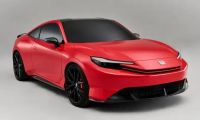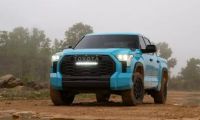As the country celebrated its 246th birthday this week on July 4th, it was an excellent time to look back at one company that helped change our national path and much of our historical conversation.
America Is A Young Country
It seems as if the United States has been around a long time. In one way or another, it has. However, during the first thousand years of its existence, it wasn't the country we know today. At first, much of the coast was the land of Scandinavian explorers and raiders. While the continent's interior was populated with many indigenous tribes of Native Americans, the coast was where there was intercontinental transportation – by Norse long boats.
After the Scandinavians, Portuguese sailors and fishermen set up trading posts on roughly the exact coastal locations as the Scandinavians who arrived here about 1,000 A.D. The Portuguese arrived, followed by the Spanish ruled the Americas like colonies. The successive great empires, the French and English, took over in the mid-1600s as the formerly great Portuguese and Spanish empires slipped into history, though it did take years.
This brings us quickly up to the time of the Revolutionary War against England, which brought the country its freedom and the Republic we know today.
So, why, you may wonder, is a history lesson appearing at a car site? It's a good question and one we'll get to quickly because you see that America has been defined by transportation and access to the rivers, wagons, trains, and cars.
An American Historical Perspective
For the first century that the country was a free nation, our transportation system was defined by the rivers that course through the nation. If people wanted to go anywhere, they usually traveled by flatboat and later steamboat – before the expansion of the western rail system. Most of the nation's rivers run north to south, which led to a significant boom along the rivers and highlighted the country's first successes. The rivers were like arteries that carried the nation's commerce early on.
Since they ran north to south other means of travel were necessary to go east-to-west. Wagons were used to tie the north-south river trade with the east-west expansion of the nation. The Conestoga not only carried families to new homes in the West, but it also served as the livery service of the new nation until developments in Europe in the late 19th century turned things over. The developments were the four-cycle internal combustion engine pioneered by Nicholas Otto and the development of the first automobile pioneered by Daimler and Benz in Germany.
The technology quickly hopscotched across the globe as New England became a hotbed of automotive manufacturing. It has been estimated that at one time or another, more than 150 carmakers appeared and disappeared from 1890 to 1930. Some manufacturers managed to make the grade for a while, and then they disappeared. The Duryea brothers of Springfield, MA, brought the automotive revolution to the nation (though there were other early pioneers, as well.
Early contenders for the lead in this all-American story had names like Olds (Ransom), Durant, and Ford. They are names that are indelibly linked to the American auto industry.
So, where are we in this story, and why is this history lesson continuing, you may well ask? Here's the answer: these pioneers answered a need that riverboats, barges, or steamers couldn't fill. Railways could not answer the need, either. You could go long distances in any of those conveyances, but they weren't very practical for short-haul transportation. Without this transport, people were confined to the coasts and cities they had been for hundreds of years.
Ford Innovations Helps Make It A Force
The real breakthrough in transportation occurred in 1908 when the first Ford Model Ts rolled off the assembly line at Ford's assembly plant. That year, the automaker turned out an impressive total of 10,000 vehicles. By 1914, Ford's impressive invention turned out 300,000 Model Ts per year. This was Henry Ford's aim. Not only did he pay his assembly line workers the munificent sum of $5 per day (at that time, it was something), he was able through his innovation to keep his costs down so that the "average man" could obtain one of his vehicles. Ford's vision was more of an agricultural one. He envisioned a nation of citizen farmers who could use their vehicles for transport on their farms. The versatile Model T could, with a few additions, could serve as a tractor, plowing machine and cultivator, and even a harvester. And they could serve as the farm's power plant as they could be made into electric generators. And, in the winter, they could become the first ski mobiles with the addition of a tracked chain and front skis (the author of this piece once saw a Model T tricked out at an auto storage facility).
The ambitious Model T – "any color you want as long as it's black" – was the start of the mobility revolution in this country. No longer were workers constrained to live near where they earned their livings. Instead, they could move out to the suburbs where it was believed that the air was cleaner and better for you at the time.
This aside, the revolution in mobility began then and hasn't stopped yet. It made America mobile, using cars they could afford, and it changed our notions about cars and mobility and what they meant. It also changed the notions of generations of people who not only used their cars for work but also used them for various types of play.
Ford’s Notable Innovations Through The Years
Yes, Ford was responsible for this. Over the years, it has been responsible for many iconic vehicles people remember. Here's a list of the notable ones:
- Ford Quadricycle (1896) – Ford's first "car," powered by four-cylinder engine bicycle wheels
- Model T – Ford's revolutionary model, sold 15 million before production ceased in 1928; phased out in favor of the more modern Model A
- Model T.T. – Ford's first pickup, based on the Model T chassis. This would be the standard for Ford trucks until the F-Series debuted about half-a-century later
- Ford Tri-Motor Airplane – Though not a car, the Tri-Motor was important in that it gave the public and airlines their first successful commercial airliner
- Model A – Ford's successor to the Model T. It incorporated many features never seen on the Model T such as a pushbutton start, windshield wipers, an enclosed cab, heating, better pneumatic brakes, and better suspension. The Model A was the basis of many of the hotrods of the 1950s
- Flathead V-8 engine – Ford's 1932 development of a reliable V-8 engine raised the performance bar. It also allowed people to get between places more quickly. It was fuel-thirsty, but with gas at about 10 cents a gallon for leaded regular, who cared how much gas it used
- Lincoln Zephyr – Ford's swept aerodynamic design; it was in the same era as Chrysler's famous Airflow, which also used aerodynamic styling as it was understood in this period
- Ford F-Series pickups – This series was the automaker's first purpose-built pickup that used its platform and not an auto chassis. The first vehicle was the Ford F-1. There have been 13 generations of Ford F-Series pickups. Later versions changed to the F-100 and finally the F-150/Super Duty line
- 1949 Ford – First major vehicle made after World War II. V-8-powered it featured unique styling and used wind-tunnel testing
- 1956 Ford "Porthole" Thunderbird
- Continental introduced; pioneered reverse-opening rear doors; classic boxy style
- Ford Edsel – The uniquely styled Edsel was introduced as the recession of the late 1950s hit.
- Ford Bronco – The iconic vehicle that helped introduce the American motoring public to SUVs. A two-door model, it was produced until 1996, when it was superseded by the Ford Explorer
- Ford Mustang – The iconic sports model that pioneered the long-hood, short rear-deck styling of the day. It has been produced since 1965.
- Three-point safety belts – Until this innovation, though there were belts, they tended to land and lay all over the place, making them inconvenient, at best. The key here is that Ford pioneered self-retracting should and lap belts so that they were quickly accessible and usable
Ford Escort – A world car, one of Ford's first - Ford Taurus – Its introduction in 1985 marked a radical departure in auto styling. The front-drive Taurus, powered by the 3-liter Vulcan engine, was the first of the jellybean-styled vehicles
- Ford Explorer. The Explorer helped to build the public's receptivity to SUVs and helped establish the SUV market, building on the success of the Bronco. In 1996, Ford built the Explorer EV that foreshadowed today's EV fleet
- Ford Mondeo – Also known as the Ford Fusion today, and the Mondeo was Ford's world car
- Ford Expedition/Lincoln Navigator – Helped to establish the luxury SUV segment
- Ford GT – Ford's iconic entry into the sports car world
- Mustang Mach-E – Ford's first true electric sold under the Mustang brand. It is super-popular
- Ford Transit E.V. – Ford makes an electric for commercial users
- Ford F-150 Lightning – Ford introduces its first fully electric pickup as a 2022 model
It is a list of achievements that keeps growing as the automaker heads into its second century. This year Ford celebrated its 119th anniversary, even as the country is celebrating its 236th. It is still leading automotive innovation and diversity.
You can find more information about Ford's long innovative role at www.corporate.ford.com/about/history.
Mustang logo courtesy of Ford
Marc Stern has been an automotive writer since 1971 when an otherwise normal news editor said, "You're our new car editor," and dumped about 27 pounds of auto stuff on my desk. I was in heaven as I have been a gearhead from my early days. As a teen, I spent the usual number of misspent hours hanging out at gas stations Shell and Texaco (a big thing in my youth) and working on cars. From there on, it was a straight line to my first column for the paper, "You Auto Know," an enterprise I handled faithfully for 32 years. Not many people know that I also handled computer documentation for a good part of my living while writing YAN. My best writing, though, was always in cars. My work has appeared in Popular Mechanics, Mechanix Illustrated, AutoWeek, SuperStock, Trailer Life, Old Cars Weekly, Special Interest Autos, etc. You can follow me on: Twitter or Facebook.












